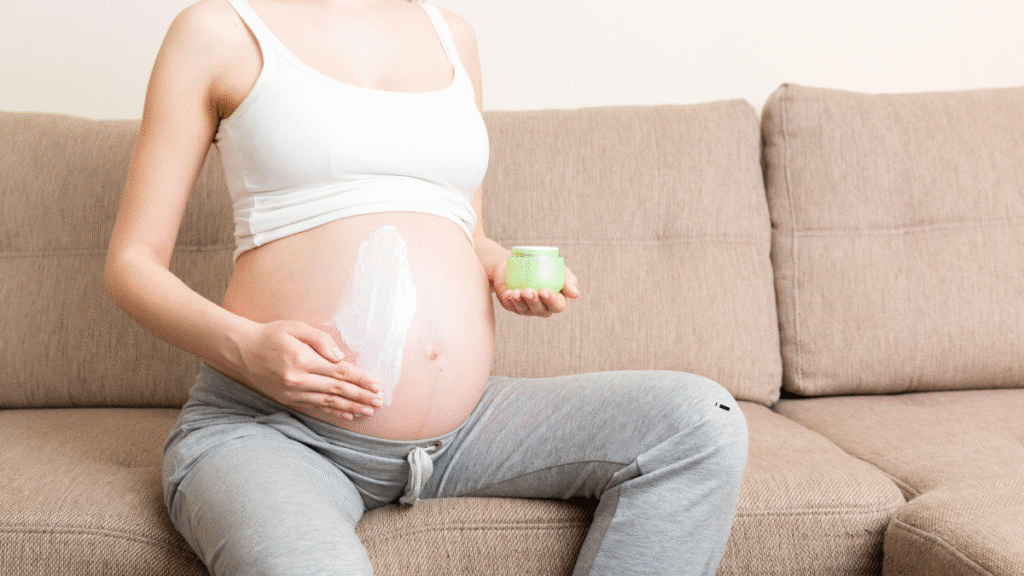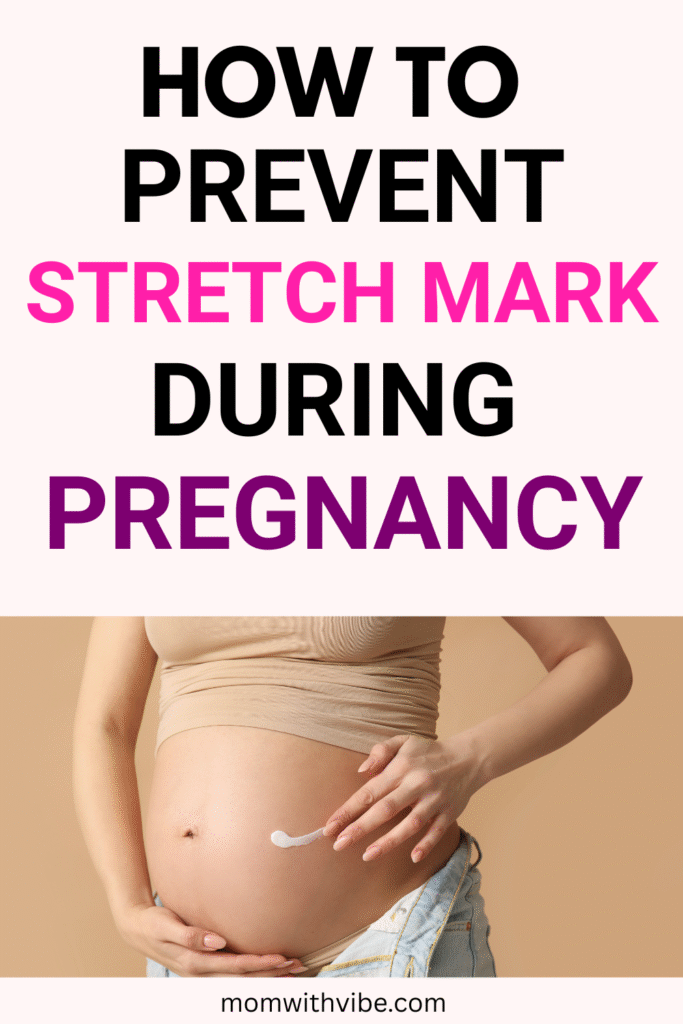Pregnancy is an amazing and life-changing experience, and it is unaccompanied by a wide array of physical changes. One of them is stretch marks. They are usually red, purple, or dark brown in color because they form as a result of the skin being stretched by the body as it realigns and changes in order to accommodate the growing baby.
Although stretch marks are absolutely natural and are a part of life completely, there are many women who hope to either avoid or minimize them during pregnancy. Luckily, there exist methods to help avoid stretch marks or reduce them in any way. This thorough guide includes tips, skincare regimens, and lifestyle changes that will help your skin throughout its pregnancy journey.
What Are Stretch Marks?
Stretch marks or striae gravidarum are scars that occur when the skin is stretched quickly, especially during pregnancy, weight gain, or hormonal changes, to name just a few. They are normally found on the abdomen, breasts, thighs, hips, and buttocks—the most vulnerable parts during pregnancy. The stretch marks may be purple, pink, or reddish, but with time, they become lighter and silvery.
Stretch marks themselves do not cause any damage to the skin or health, but they may be an aesthetic issue of concern for some women. Though it is hardly possible to avoid stretch marks altogether, you can take steps to minimize their appearance and make them less apparent.
1. Hydrate Yourself from the Inside
Hydrating your skin is one of the most effective ways to help it during pregnancy. Skin elasticity is crucial in preventing stretch marks, and proper hydration helps maintain that elasticity. Dry skin is more prone to cracking and leaving scars, so it is essential to provide your body with plenty of water throughout the day.
Tip: Drink at least 8-10 glasses of water daily. You can also increase hydration by adding water-rich fruits to your diet, such as cucumbers, watermelon, and oranges.

2. Apply Moisturizers and Oils Regularly
One of the best methods of maintaining soft and moisturized skin is through the regular use of moisturizers and oils. Using an enriched moisturizing cream or oil keeps the skin stretchy, preventing it from drying out and tearing when stretched. Look for products with cocoa butter, shea butter, vitamin E, and hyaluronic acid.
Recommended Products:
- Cocoa Butter: This creamy blend of butter is known for deeply moisturizing the skin and improving its elasticity.
- Shea Butter: Rich in fatty acids and vitamins, it can keep the skin moisturized and soft.
- Vitamin E Oil: Packed with antioxidants, it helps repair skin damage and fade stretch marks.
- Hyaluronic Acid: This ingredient draws moisture to the skin, keeping it plump and hydrated.
Pro Tip: Massage the moisturizer or oil into sensitive areas, such as the belly, thighs, and breasts, at least twice a day. Be gentle to ensure the product absorbs well into your skin.
Related: How to Help Your Baby Turn Head Down
3. Eat a Healthy Diet
To stay strong, healthy, and elastic, your skin requires good nutrition. A balanced diet rich in vitamins, minerals, and healthy fats helps keep your skin healthy and lowers the chances of stretch marks. Here are some key foods to include in your diet:
- Foods with Vitamin C: These foods aid in the production of collagen, which helps keep the skin firm and elastic. Add citrus fruits, bell peppers, strawberries, and broccoli to your meals.
- Foods with Zinc: Zinc plays a role in skin healing and repair. Include nuts, seeds, legumes, and whole grains in your diet.
- Healthy Fats: Omega-3 fatty acids found in foods like avocados, salmon, walnuts, and chia seeds help maintain hydrated and elastic skin.
Tip: Consider consuming prenatal vitamins that offer a balanced combination of nutrients to support both you and your baby.
4. Keep a Steady Weight Gain
Rapid weight gain is one of the leading causes of stretch marks because the skin stretches too quickly to keep up. Although weight gain is normal during pregnancy, ensure that it happens gradually. Sudden weight gains put unnecessary strain on the skin, leading to stretch marks.
Tip: Follow the weight gain guidelines recommended by your healthcare provider, which are tailored to your pre-pregnancy weight and overall health.
5. Exercise Regularly
Regular exercise during pregnancy helps improve circulation, ensuring that your skin stays nourished and healthy. It also supports a healthy weight and overall well-being. Low-impact exercises like walking, swimming, and prenatal yoga are safe and beneficial for pregnant women.
Note: Always check with your physician before starting any exercise program to ensure it’s safe for you and your baby.
6. Avoid Hot Showers and Hot Baths
While hot showers may feel soothing, they can dry out your skin, making it more susceptible to stretch marks. Hot water strips the skin of its natural oils, impairing its elasticity.
Tip: Use lukewarm water for showers and avoid long hot baths. Afterward, apply moisturizer to your wet skin to lock in moisture.
Related: 10 Types of Housework Pregnant Women Should Avoid
7. Consider Stretch Marks Creams and Treatments
Although no cream can guarantee the prevention of stretch marks, some products can help reduce their appearance or prevent more severe ones. There are numerous creams and oils specifically designed to make skin more elastic and reduce the formation of stretch marks during pregnancy.
Recommended Products:
- Palmer’s Cocoa Butter Formula Massage Lotion for Stretch Marks
- Bio-Oil Skincare Oil
- Mederma Stretch Marks Treatment
Tip: Use these products regularly, starting early in pregnancy, for the best results.
8. Protect Your Skin from the Sun
Stretch marks can become more noticeable when exposed to the sun, as the skin around them darkens. Protect your skin by applying sunscreen with SPF 30 or higher whenever you go outdoors.
Tip: Wear a wide-brimmed hat and cover up when exposed to the sun for long periods. Consider using a high-SPF sunscreen that is safe for pregnant women.
9. Massage Your Skin
Massaging your skin with oils or creams can help improve circulation, making your skin more flexible and less prone to stretch marks. Regular massage can also break down collagen fibers in the dermis, allowing the skin to stretch more easily.
Tip: Gently massage the affected areas, such as the abdomen, thighs, and hips, in circular motions. It’s also a wonderful bonding time with your baby.
10. Consult Your Healthcare Provider
If you’re concerned about stretch marks or the condition of your skin during pregnancy, consult your healthcare provider or a dermatologist. They can offer personalized advice, recommend treatments, or refer you to a specialist if needed.
Tip: Ask your doctor about the safety of any creams, oils, or treatments you plan to use during pregnancy.
Conclusion
While stretch marks are a common part of pregnancy, there are many ways you can reduce their appearance and minimize their impact. By hydrating your skin, maintaining a healthy diet, exercising regularly, and using the right skincare products, you can support your skin through the changes it undergoes during pregnancy. Remember, stretch marks are natural, and there’s no need for perfection. Embrace your changing body and know that it is far more important to be healthy and pregnant than to worry about the appearance of stretch marks.
FAQs
Q1: Is it possible to avoid stretch marks during pregnancy?
While it’s difficult to completely avoid stretch marks, there are steps you can take to minimize their appearance, such as staying hydrated, eating a balanced diet, maintaining a steady weight, and using the right skincare products.
Q2: When do stretch marks usually appear during pregnancy?
Stretch marks typically develop during the second or third trimester when your skin stretches to accommodate your growing baby.
Q3: Do stretch marks go away after pregnancy?
Stretch marks tend to fade over time and become less noticeable, but they may not completely disappear.
Q4: Are there treatments for stretch marks post-pregnancy?
There are various treatments for stretch marks after pregnancy, including topical creams, laser therapy, and microdermabrasion. Always consult with your healthcare provider before trying any treatments.
Save the pin for later



